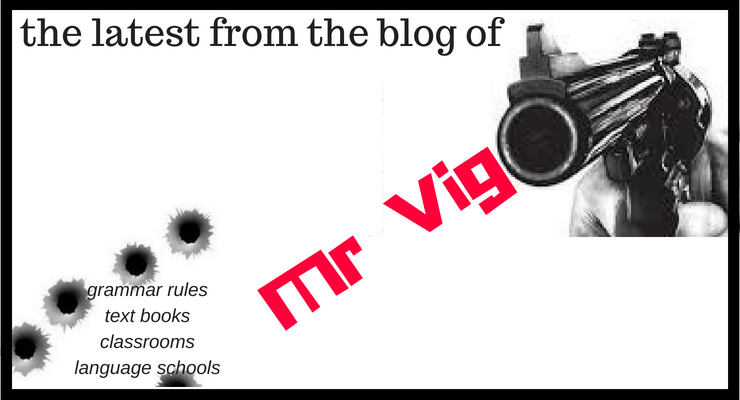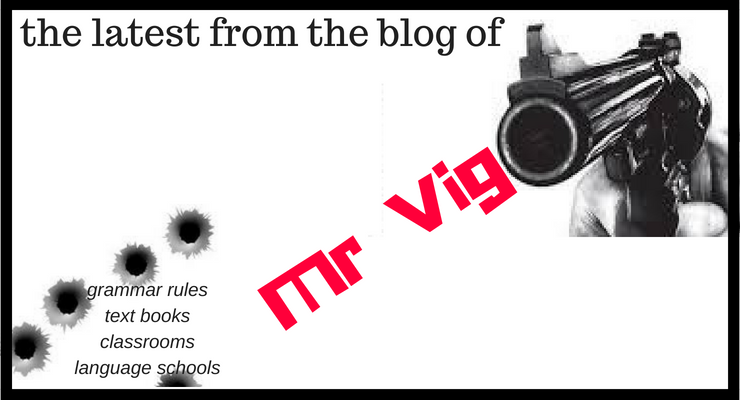This week in
Vitamin V…
We’re talking about what you should do in a conversation.
And… what you should not do.
I will teach you to become a confident English speaker without schools and rules
This week in
Vitamin V…
We’re talking about what you should do in a conversation.
And… what you should not do. Read More >
by Mr. Vig

This week in Vitamin V…
We’re talking about what you should do in a conversation.
And… what you should not do. Read More >
by Mr. Vig

So you need to improve your speaking…
How do you start?
Is it as simple as, Open your mouth and start talking?
Will this automatically make you a better speaker? Read More >
by Mr. Vig

Sunday was a lovely spring day.
Not sunny. But warm. And not too hot.
A good day for a walk.
So I finished my coffee. I got dressed. I put on my hiking boots. And I left the house. Read More >
by Mr. Vig

Yesterday I told you I don’t talk about grammar.
But I agree with author Scott Adams when he says grammar is important if you want to impress the 20% who could give you a better life.
However, one important point he didn’t make is that everyone has a different 20%.
For you, it’s either native speakers or non-native speakers. Read More >
by Mr. Vig

I never talk about grammar rules, but I read some good advice last night.
If you’re new to these emails, I am one of the few English teachers on Earth who is anti-grammar.
But this week my bedtime reading is a book by Scott Adams, the creator of the Dilbert comic, called How to Fail at Almost Everything and Still Win Big, and he makes an interesting point about grammar. Read More >
by Mr. Vig

Yesterday I told you about my niece.
I told you she studied Spanish in school for 12 years, passed all her tests, probably got all As, yet still can’t win an argument with a taco.
I then asked you how many years you studied English in school. Read More >
by Mr. Vig

“I took Spanish my whole life.”
That was what my niece said yesterday.
She came over to the house for lunch, I told her about my progress with Italian and we got on the subject of languages. Read More >
by Mr. Vig

“Goals are for losers.”
That’s a direct quote from Scott Adams, the creator of the Dilbert comic.
I was reading his book this weekend, “How to Fail at Almost Everything and Still Win Big.” Read More >
by Mr. Vig

This is Little Albert.
If speaking English makes your heart beat fast, your hands sweat, and your head ache, maybe Albert can help you.
Let me explain. Read More >

Now you can HEAR your Vitamin V lessons, learn faster, and laugh louder — in just 10 minutes a day — with exclusive stories, commentary, and bonus lessons you won’t get anywhere else!